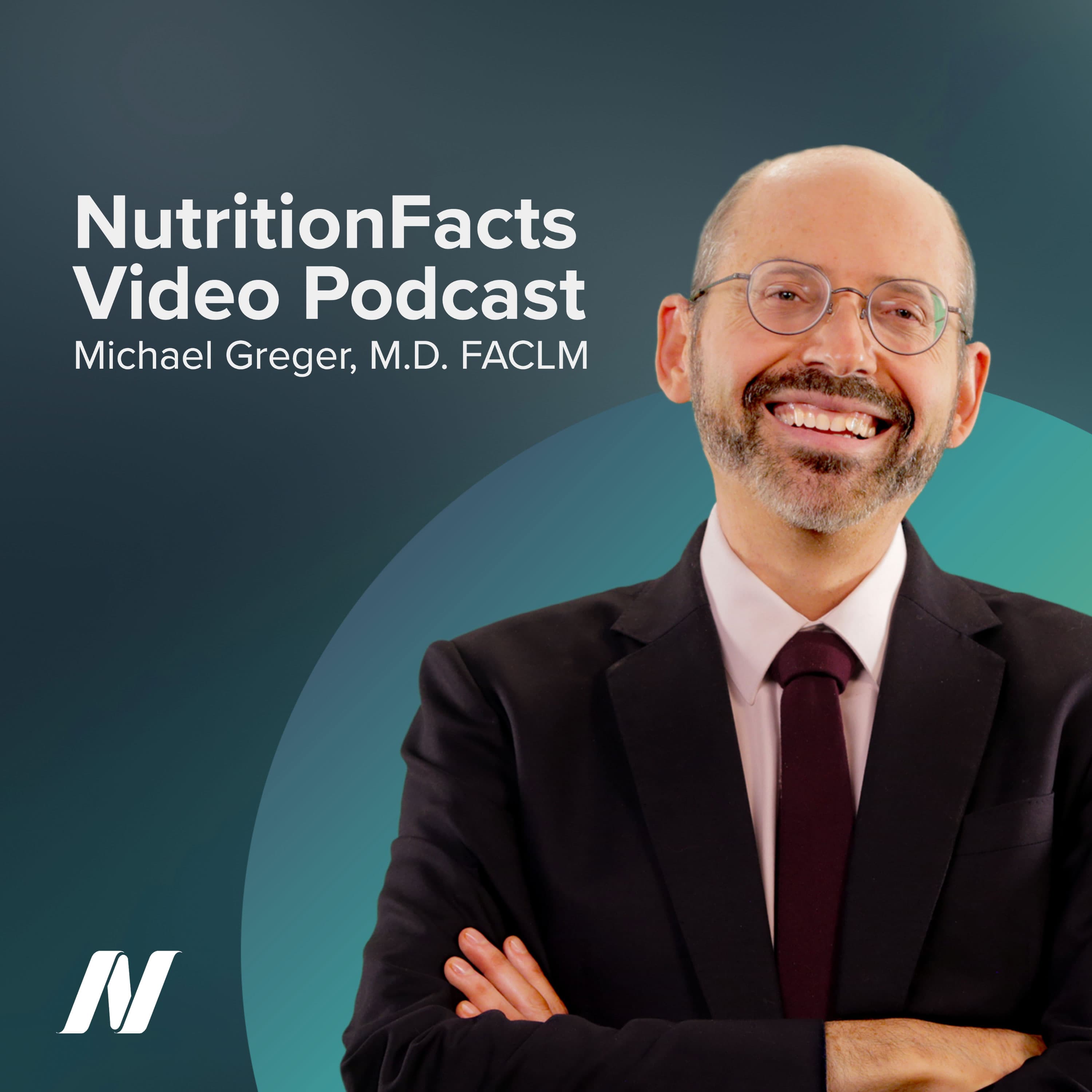The average “bad” cholesterol (LDL) level in people having heart attacks is in the “near-optimal” range, suggesting that the current guidelines are too lax.
Heart Attacks and Cholesterol: Agribusiness Sees It Differently
The level of LDL cholesterol in our blood—our “bad” cholesterol—may be the single most important indicator of heart disease risk, and is, therefore, the primary target of both drug and diet therapy. Your doctor will likely tell you that anything over 130 is high; anything under 130 is optimal, or near optimal. But that’s what most people hospitalized for heart attacks had circulating in their bloodstream.
Notes one of the investigators on this study: “Almost 75 percent of heart attack patients fell within [the] recommended targets for LDL cholesterol, demonstrating that the current guidelines may not be low enough to cut heart attack risk…” Close to half had “optimal” levels, though I’m not sure their grieving spouses and orphaned children will take much comfort in that fact.
So, we have to drop our cholesterol even lower than so-called “optimal.”
The leading agribusiness publication had a very different take on this study, though: “For years, we’ve been brainwashed to think that red meat and its associated fat content are killing us. Researchers, however, have found that the vast majority of patients—75%, in fact—hospitalized for a heart attack did not have cholesterol levels that would signal a high risk for a cardiovascular event.”
He’s saying see, cut out meat, bring your cholesterol into an “optimal” range, and still die of a heart attack. “So,” he concludes, “fire up the grill, and eat up. The next time someone tells you that you just served a heart attack on a plate, you’ll be able to give them a science-based reason why they’re dead wrong”—when, in fact, you could just end up dead.
To see any graphs, charts, graphics, images, and quotes to which Dr. Greger may be referring, watch the above video. This is just an approximation of the audio contributed by veganmontreal.
Please consider volunteering to help out on the site.
- National Institutes of Health. 2004. Third Report of the Expert Panel on Detection, Evaluation, and Treatment of High Blood Cholesterol in Adults (Adult Treatment Panel III).
- Javed U, Deedwania PC, Bhatt DL, Cannon CP, Dai D, Hernandez AF, Peterson ED, Fonarow GC. Use of intensive lipid-lowering therapy in patients hospitalized with acute coronary syndrome: an analysis of 65,396 hospitalizations from 344 hospitals participating in Get With The Guidelines (GWTG). Am Heart J. 2010 Dec;160(6):1130-6, 1136.e1-3.
The level of LDL cholesterol in our blood—our “bad” cholesterol—may be the single most important indicator of heart disease risk, and is, therefore, the primary target of both drug and diet therapy. Your doctor will likely tell you that anything over 130 is high; anything under 130 is optimal, or near optimal. But that’s what most people hospitalized for heart attacks had circulating in their bloodstream.
Notes one of the investigators on this study: “Almost 75 percent of heart attack patients fell within [the] recommended targets for LDL cholesterol, demonstrating that the current guidelines may not be low enough to cut heart attack risk…” Close to half had “optimal” levels, though I’m not sure their grieving spouses and orphaned children will take much comfort in that fact.
So, we have to drop our cholesterol even lower than so-called “optimal.”
The leading agribusiness publication had a very different take on this study, though: “For years, we’ve been brainwashed to think that red meat and its associated fat content are killing us. Researchers, however, have found that the vast majority of patients—75%, in fact—hospitalized for a heart attack did not have cholesterol levels that would signal a high risk for a cardiovascular event.”
He’s saying see, cut out meat, bring your cholesterol into an “optimal” range, and still die of a heart attack. “So,” he concludes, “fire up the grill, and eat up. The next time someone tells you that you just served a heart attack on a plate, you’ll be able to give them a science-based reason why they’re dead wrong”—when, in fact, you could just end up dead.
To see any graphs, charts, graphics, images, and quotes to which Dr. Greger may be referring, watch the above video. This is just an approximation of the audio contributed by veganmontreal.
Please consider volunteering to help out on the site.
- National Institutes of Health. 2004. Third Report of the Expert Panel on Detection, Evaluation, and Treatment of High Blood Cholesterol in Adults (Adult Treatment Panel III).
- Javed U, Deedwania PC, Bhatt DL, Cannon CP, Dai D, Hernandez AF, Peterson ED, Fonarow GC. Use of intensive lipid-lowering therapy in patients hospitalized with acute coronary syndrome: an analysis of 65,396 hospitalizations from 344 hospitals participating in Get With The Guidelines (GWTG). Am Heart J. 2010 Dec;160(6):1130-6, 1136.e1-3.
Comparte "Heart Attacks and Cholesterol: Agribusiness Sees It Differently"
Puedes compartir este material en la red o impreso bajo nuestra licencia Creative Commons. Deberás atribuir el artículo a NutritionFacts.org y agregar la liga a nuestro sitio en tu publicación
Si se realizan cambios en el texto o video original, se debe indicar, razonablemente, lo que ha cambiado en relación con el artículo o el video.
No se puede usar nuestro contenido para propósitos comerciales.
No puede aplicar términos legales o medidas tecnológicas que restrinjan a otros a hacer cualquier cosa permitida aquí.
Si tienes alguna duda, por favor Contáctanos
Heart Attacks and Cholesterol: Agribusiness Sees It Differently
LicenciaCreative Commons Attribution-NonCommercial 4.0 International (CC BY-NC 4.0)
URLNota del Doctor
Be sure to check out all my other videos on heart disease and industry influence.
And check out my associated blog posts for more context: Generic Lipitor is not the answer to our heart disease epidemic, and Stool Size and Breast Cancer Risk.
Échale un vistazo a la página de información sobre los recursos traducidos.
 Video anterior
Video anterior Siguiente video
Siguiente video